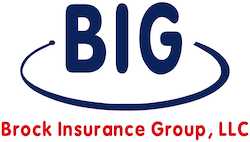The general liability insurance market has faced hardening conditions in recent years, largely due to increasing claim frequency and severity. As such, most policyholders have encountered ongoing rate jumps, stringent underwriting standards and limited capacity. Fortunately, insurance carriers recorded improved underwriting results in 2022-23, allowing for premium moderation. These conditions have pressed on in 2024 so far, with most insureds seeing only single-digit rate increases. According to industry data, average premium hikes ranged between 5.4% and 6.2% in the year’s first quarter. Nonetheless, several concerning trends across the segment still have the potential to threaten claim costs and negatively impact overall market performance. In the latter half of 2024, policyholders can anticipate another round of modest premium increases, while insureds operating in sectors with elevated liability risks may be vulnerable to larger rate hikes and coverage limitations.

Developments and Trends to Watch
- Litigation concerns—Businesses have been facing an increase in litigation following liability incidents (actual or alleged) and greater penalties from such legal action due to social inflation, which refers to societal trends that influence the rising costs of insurance claims. This phenomenon has fueled a surge in jury awards exceeding $10 million, also known as nuclear verdicts. A recent report from public relations firm Marathon Strategies confirmed that nuclear verdicts reached a 15-year high in 2023, with the number of such verdicts increasing by 27% in the past 12 months alone. Additionally, the report found that 27 of these verdicts were classified as “thermonuclear,” thus indicating jury awards above
$100 million. Social inflation and associated litigation concerns have contributed to elevated general liability insurance claim costs, increasing the risk of underinsurance and heightened out-of-pocket expenses amid losses involving nuclear verdicts. - Increased medical expenses—Coverage for medical costs related to third-party injuries is a critical component of general liability insurance. Consequently, surging medical expenses have compounded claim costs in the segment during the past few decades, with no end in sight. In fact, the U.S. Bureau of Labor Statistics (BLS) reported that the total value of medical care has jumped by over 115% since 2000. Although inflation among overall goods and services briefly exceeded medical inflation in 2023, evidenced by monthly consumer and producer price index data from the BLS, this trend reversed in the first quarter of 2024, with medical care and health spending again outpacing growth across the rest of the economy. With this in mind, surging medical expenses will likely continue playing a role in elevated general liability insurance claim costs going forward.
- Polyfluoroalkyl substances (PFAS)—PFAS are a large grouping of chemicals widely manufactured and utilized within different products and packaging across the United States since the 1940s. Over the past few years, PFAS have been the subject of increased regulatory scrutiny stemming from emerging developments regarding the health and safety of these substances. While some types of PFAS
have faced regulatory action in the past, several states recently implemented efforts to limit overall PFAS usage and exposure in the coming years and beyond. The first few months of 2024 kicked off with three states passing PFAS-related product safety laws, joining 15 states with similar legislation, and more states will likely follow suit. This legislation may cause a rise in litigation alleging PFAS exposure and related ailments via companies’ products and packaging. As regulatory pressures and litigation concerns about these chemicals persist, businesses that leverage PFAS may experience elevated liability risks. What’s more, companies facing PFAS-related claims could be more susceptible to coverage exclusions and
substantial out-of-pocket losses.
Tips for Insurance Buyers:
- Ensure your establishment has measures in place to reduce the likelihood of customer and visitor
injuries. - Conduct a risk assessment to identify any PFAS-related concerns, namely the potential impacts of PFAS exposure resulting from your products, in your operations. Adjust your risk management measures as needed.
- Examine your coverage with insurance professionals to ensure your policy limits match your needs.
